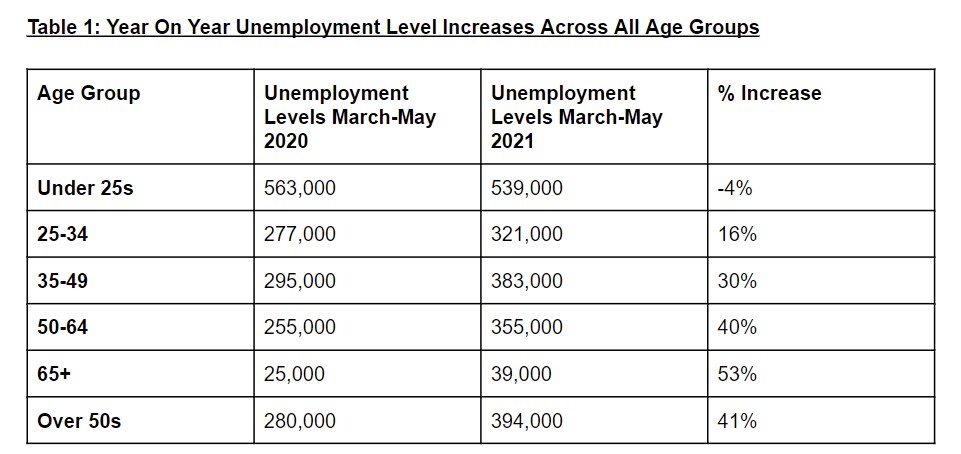- Home
- Press
- The Number of Unemployed Women Aged 65+ Increases by 193% in a Year and Reaches Record Levels
Unemployment levels amongst women aged 65 and over have increased from 7,200 to 21,000 in a year (March-May 2020 versus March-May 2021) – an increase of 193%, according to analysis of the latest government labour market data by Rest Less.
Economic activity levels (the number of people actively working or looking for work) amongst women aged over 65 are also on the decline following the pandemic, reversing the long-term trend upwards, despite the increase in the state pension age to 66. In the March to May 2021 period, there were 32,000 fewer women aged over 65 either working or actively looking for work than in the same time a year ago (chart 2) – a fall of 5.5%.
Rest Less analysed labour market data from the Office of National Statistics and found that amongst both men and women combined, unemployment levels for those aged 65 and over increased by 53% in a year – a greater percentage increase than any other age group (table 1).
The number of women aged 65 and older who are now unemployed outstrips the number of men of the same age for the first time since 2016. The unemployment rate for women aged 65 and over also reached a recent high of 3.8%, significantly higher than the 1.2% recorded at this time last year and also higher than the rate of 2.3% amongst men aged 65 and older.




Stuart Lewis, Founder of Rest Less, commented:
“Whilst the labour market is showing significant signs of improvement and job vacancies have now surpassed pre-pandemic levels, it is clear that the recovery is not yet working for everyone, with thousands of talented older workers at risk of being left behind.”
“In the last recession of 2009, women could retire at 60 and receive the state pension; today it is 66. The sharp rise in unemployment levels amongst women aged 65 or over is only set to get worse over the summer with the winding down of the furlough scheme (11% of all working women aged 65 and older are still on furlough). There are far too many women in their 60s stuck between a rock and a hard place. They can’t find a job due to rampant age discrimination but they can’t yet claim their state pension either – which puts them in an extremely vulnerable financial position as they approach retirement.”
“As well as heightened age discrimination due to the pandemic, working women in their 60s remain significantly more likely to take on the role of carer for a parent or partner at home, which often requires a level of workplace flexibility to fit around these additional responsibilities – further narrowing their pool of available job opportunities.”
“If the Government expects us to work until we are 66, rising to 67 by 2028, then they need to invest in tailored retraining and employment support programmes for older workers that are more targeted and impactful than the existing generic initiatives in place. Against the backdrop of widespread age discrimination and a rising state pension age, the Government also needs to look holistically at the range of financial support available for unemployed workers in their 60s.”
Tailored career support and guidance for workers in their 50s and 60s can be found on the Rest Less jobs website.
-Ends-
Notes to Editors
*The data is based on the latest labour market data from the Office of National Statistics which can be found here.
For media enquiries, please contact:
Aisling Gray
Head of Communications
Phone: 07900996065
Email: [email protected]
About Rest Less
Rest Less (restless.co.uk) launched in early 2019 and is a digital community for people in their 50s, 60s and beyond. Rest Less is on a mission to help its members get more out of life and offers content guidance and resources on topics spanning Jobs and Careers, Volunteering, Learning, Money, Health and Lifestyle and Dating.
* Links with an * by them are affiliate links which help Rest Less stay free to use as they can result in a payment or benefit to us. You can read more on how we make money here.
